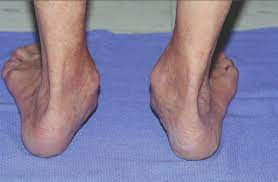
Adult acquired flatfoot (AAF) is a condition that develops over time, typically due to wear and tear or injury to the posterior tibial tendon, which supports the arch of the foot. As the posterior tibial tendon weakens or becomes damaged, the arch of the foot can gradually collapse, leading to a flatfoot deformity.
Symptoms of AAF may include pain, swelling, and weakness in the foot and ankle, as well as difficulty walking or standing for extended periods of time. In some cases, the affected foot may also appear visibly flat or deformed.
Treatment for AAF depends on the severity of the condition and may include:
- Non-surgical options: Mild cases of AAF can often be treated with rest, ice, and physical therapy to strengthen the surrounding muscles and improve foot and ankle stability. Orthotic devices such as arch supports or ankle braces may also be helpful in providing additional support.
- Surgical options: In more severe cases, surgery may be necessary to repair or reconstruct the damaged tendon and restore the arch of the foot. The specific type of surgery will depend on the extent of the damage and the individual needs of the patient.
Prevention of AAF involves maintaining a healthy weight, engaging in regular exercise to strengthen the muscles and tendons in the foot and ankle, and wearing supportive shoes that fit well and provide adequate arch support.
If you are experiencing symptoms of AAF, it is important to seek prompt medical attention from a healthcare provider or foot specialist. Early treatment can help to prevent further damage and improve the chances of a full recovery.
